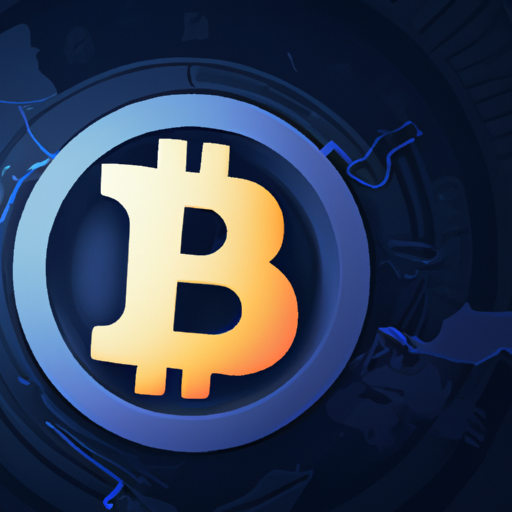“””
The concept of halving was introduced by Bitcoin’s pseudonymous creator, Satoshi Nakamoto, as a mechanism to control inflation and ensure a deflationary environment. This ingenious method is a testament to the thoughtfulness put into the creation of Bitcoin, drawing parallels to my own experiences in the world of traditional finance where such mechanisms are non-existent.
How Bitcoin Halving Works
Every 210,000 blocks, or approximately every four years, the reward for mining a new block is halved. This continues until the reward becomes negligible and the maximum supply of 21 million Bitcoins is reached. It’s akin to a digital gold rush where miners are incentivized to mine more efficiently as rewards decrease.
Effects of Halving on Miners
Bitcoin halving has multiple effects on miners:
- Reduced rewards: Miners receive half the Bitcoins for validating and adding a new block to the blockchain.
- Potential miner exodus: If mining becomes unprofitable, some miners may exit, leading to a temporary decrease in network security.
- Inflation rate: Halving decreases the rate at which new Bitcoins are introduced into circulation.
- Price implications: Historically, halvings have been followed by significant price surges due to decreased supply and increased demand.
As an analogy from my personal life, it’s like fishing in a pond that is slowly being drained. The fish become more scarce over time, increasing their value.
Historical Context: A Reflection on Traditional Finance
Bitcoin’s halving mechanism stands in stark contrast to traditional financial systems. Unlike central banks that can print money at will, leading to inflation and devaluation, Bitcoin maintains its scarcity through halvings. This reminds me of my grandfather’s tales about how he used to buy bread with just pennies but today those pennies are practically worthless due to inflation.
Miner Adaptability: Survival of the Fittest
With each halving event, miners are forced to adapt or perish. They need either find more cost-effective methods or rely on transaction fees for their survival – similar to how businesses must constantly innovate or risk becoming obsolete.
Broader Impacts: Cryptocurrency Adoption and Public Perception
Bitcoin halvings invariably draw attention from mainstream media leading to increased public awareness about cryptocurrency – similar to how major events like elections or sports finals draw widespread attention.
A Glimpse into the Future: Post-Final Halving
The belief is that by then transaction fees will be primary incentive for miners ensuring network continuity – much like how tolls fund road maintenance after initial construction costs have been met.
Future Predictions and Speculations
While historical data indicates price surges post-halving it’s essential noting correlation doesn’t imply causation – akin how sunny weather correlates with ice cream sales but doesn’t necessarily cause them.
Conclusion
Bitcoin halving plays a central role in its economic model emphasizing scarcity and potential long-term value – much like vintage wines become more valuable over time due their limited quantity.
“””
Revised Article Content with inserted Links:
“””
The concept of halving was introduced by Bitcoin’s pseudonymous creator, Satoshi Nakamoto, as a mechanism to control inflation and ensure a deflationary environment. This ingenious method is a testament to the thoughtfulness put into the creation of Bitcoin, drawing parallels to my own experiences in the world of traditional finance where such mechanisms are non-existent.
How Bitcoin Halving Works
Every 210,000 blocks, or approximately every four years, the reward for mining a new block is halved. This continues until the reward becomes negligible and the maximum supply of 21 million Bitcoins is reached. It’s akin to a digital gold rush where miners are incentivized to mine more efficiently as rewards decrease.
Effects of Halving on Miners
Bitcoin halving has multiple effects on miners:
- Reduced rewards: Miners receive half the Bitcoins for validating and adding a new block to the blockchain.
- Potential miner exodus: If mining becomes unprofitable, some miners may exit, leading to a temporary decrease in network security.
- Inflation rate: Halving decreases the rate at which new Bitcoins are introduced into circulation.
- Price implications: Historically, halvings have been followed by significant price surges due to decreased supply and increased demand.
As an analogy from my personal life, it’s like fishing in a pond that is slowly being drained. The fish become more scarce over time, increasing their value.
Historical Context: A Reflection on Traditional Finance
Bitcoin’s halving mechanism stands in stark contrast to traditional financial systems. Unlike central banks that can print money at will, leading to inflation and devaluation, Bitcoin maintains its scarcity through halvings. This reminds me of my grandfather’s tales about how he used to buy bread with just pennies but today those pennies are practically worthless due to inflation.
Miner Adaptability: Survival of the Fittest
With each halving event, miners are forced to adapt or perish. They need either find more cost-effective methods or rely on transaction fees for their survival – similar to how businesses must constantly innovate or risk becoming obsolete.
Broader Impacts: Cryptocurrency Adoption and Public Perception
Bitcoin halvings invariably draw attention from mainstream media leading to increased public awareness about cryptocurrency – similar to how major events like elections or sports finals draw widespread attention.
A Glimpse into the Future: Post-Final Halving
The belief is that by then transaction fees will be primary incentive for miners ensuring network continuity – much like how tolls fund road maintenance after initial construction costs have been met.
Future Predictions and Speculations
While historical data indicates price surges post-halving it’s essential noting correlation doesn’t imply causation – akin how sunny weather correlates with ice cream sales but doesn’t necessarily cause them.
Conclusion
Bitcoin halving plays a central role in its economic model emphasizing scarcity and potential long-term value – much like vintage wines become more valuable over time due their limited quantity.
“””
Revised Article Content with inserted Links:
“””
The concept of halving was introduced by Bitcoin’s pseudonymous creator, Satoshi Nakamoto, as a mechanism to control inflation and ensure a deflationary environment. This ingenious method is a testament to the thoughtfulness put into the creation of Bitcoin, drawing parallels to my own experiences in the world of traditional finance where such mechanisms are non-existent.
How Bitcoin Halving Works
Every 210,000 blocks, or approximately every four years, the reward for mining a new block is halved. This continues until the reward becomes negligible and the maximum supply of 21 million Bitcoins is reached. It’s akin to a digital gold rush where miners are incentivized to mine more efficiently as rewards decrease.
Effects of Halving on Miners
Bitcoin halving has multiple effects on miners:
- Reduced rewards: Miners receive half the Bitcoins for validating and adding a new block to the blockchain.
- Potential miner exodus: If mining becomes unprofitable, some miners may exit, leading to a temporary decrease in network security.
- Inflation rate: Halving decreases the rate at which new Bitcoins are introduced into circulation.
- Price implications: Historically, halvings have been followed by significant price surges due to decreased supply and increased demand.
As an analogy from my personal life, it’s like fishing in a pond that is slowly being drained. The fish become more scarce over time, increasing their value.
Historical Context: A Reflection on Traditional Finance
Bitcoin’s halving mechanism stands in stark contrast to traditional financial systems. Unlike central banks that can print money at will, leading to inflation and devaluation, Bitcoin maintains its scarcity through halvings. This reminds me of my grandfather’s tales about how he used to buy bread with just pennies but today those pennies are practically worthless due to inflation.
Miner Adaptability: Survival of the Fittest
With each halving event, miners are forced to adapt or perish. They need either find more cost-effective methods or rely on transaction fees for their survival – similar to how businesses must constantly innovate or risk becoming obsolete.
Broader Impacts: Cryptocurrency Adoption and Public Perception
Bitcoin halvings invariably draw attention from mainstream media leading to increased public awareness about cryptocurrency – similar to how major events like elections or sports finals draw widespread attention.
A Glimpse into the Future: Post-Final Halving
The belief is that by then transaction fees will be primary incentive for miners ensuring network continuity – much like how tolls fund road maintenance after initial construction costs have been met.
Future Predictions and Speculations
While historical data indicates price surges post-halving it’s essential noting correlation doesn’t imply causation – akin how sunny weather correlates with ice cream sales but doesn’t necessarily cause them.
Conclusion
Bitcoin halving plays a central role in its economic model emphasizing scarcity and potential long-term value – much like vintage wines become more valuable over time due their limited quantity.
“””

